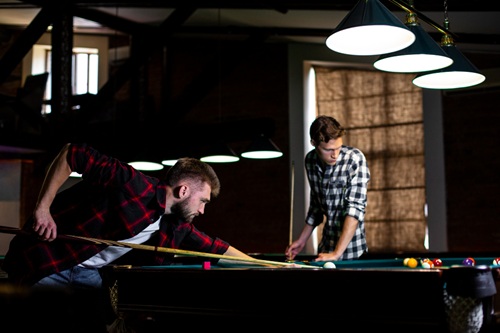When it comes to billiards or pool, every player—from weekend warriors to seasoned competitors—knows that skill is only half the story. The other half is your equipment. And at the heart of it all lies one essential tool: your cue. The right cue isn’t just a stick; it’s a precision instrument that defines control, confidence, and consistency in every shot you make.
Whether you’re upgrading from a house cue or searching for your first personal stick, understanding the value of investing in a proper cue can dramatically elevate your game.
Why the Right Cue Matters More Than You Think
A cue isn’t just an accessory—it’s an extension of your arm. It translates your technique, grip, and focus into results on the table. Using a poorly balanced or low-quality cue can lead to frustration, inaccurate shots, and slower progress, no matter how good your aim may be.
1. Precision and Balance
High-quality cues are engineered with precise weight distribution and balance points. This balance ensures your stroke feels natural and repeatable, allowing you to develop a consistent rhythm with every shot.
2. Better Feedback and Feel
A well-crafted cue delivers clear feedback—helping you instantly sense when your stroke or contact point is off. This tactile response sharpens your accuracy and helps refine your technique faster.
3. Improved Confidence
Confidence comes from trust. When your cue feels like a part of you, every shot feels more deliberate and controlled. You’ll spend less time adjusting and more time executing.
Choosing the Right Cue: What to Look For
Investing in a cue is a personal journey, and no two players are exactly alike. Before making your purchase, consider the following aspects to find the one that fits your style and comfort.
| Feature | What It Means | Why It Matters |
| Weight | Typically ranges from 18 to 21 oz | Affects shot control and cue speed |
| Length | Standard 57–58 inches | Must suit your height and stance |
| Tip Size | Usually 11–13 mm | Influences spin and accuracy |
| Material | Maple, ash, carbon fiber | Determines feel, balance, and durability |
| Joint Type | Stainless, wood-to-wood, quick-release | Impacts cue’s hit and convenience |
How to Test and Choose the Perfect Cue
Here’s a simple checklist to guide you before investing in your next cue:
✅ Step 1: Pick up different cues and test their weight balance.
✅ Step 2: Check the straightness by rolling it on the table surface.
✅ Step 3: Feel the grip texture—whether you prefer linen wrap, leather, or no wrap at all.
✅ Step 4: Test a few practice shots. Notice the vibration and feedback.
✅ Step 5: Choose one that complements your playing style—aggressive, defensive, or balanced.
💡 Pro Tip: Visit a reputable dealer such as CueStore Australia to explore top-quality cues that fit your skill level and budget.
The Pros and Cons of Investing in a Quality Cue
Pros:
- Consistency: Ensures a repeatable stroke and dependable performance.
- Longevity: Quality cues last for years with proper care.
- Better Control: You’ll notice smoother shots and more precise spin.
- Customization: Many premium cues offer customizable weights, tips, and designs.
Cons:
- Upfront Cost: A premium cue can be a financial investment.
- Adjustment Period: It may take a few sessions to adapt to a new cue’s feel.
- Maintenance: Requires proper storage and occasional tip replacement.
Even with these minor drawbacks, serious players agree that a proper cue is worth every cent when it comes to performance improvement.
Caring for Your Cue: Keep It Game-Ready
To protect your investment and ensure consistent play:
- Store it upright or in a cue case to prevent warping.
- Avoid temperature extremes that can damage the wood.
- Clean the shaft regularly with a microfiber cloth or cue cleaner.
- Inspect the tip for wear and replace it as needed.
- Check joints and ferrules for looseness or cracks.
Simple maintenance habits can extend your cue’s lifespan and keep your game sharp for years.
FAQs About Buying a Proper Cue
Most players prefer 19–20 oz cues, but lighter options offer faster strokes, while heavier ones provide more stability. Try both before deciding.
Carbon-fiber cues offer durability and low maintenance, while maple or ash cues deliver a traditional feel and classic feedback. It comes down to personal preference.
Absolutely. A proper cue promotes consistency, control, and comfort—key elements that translate directly into better performance.
Beginner cues can start around $100–$200, while professional models can exceed $500. Choose one that aligns with your commitment and playing frequency.
For trusted brands and expert guidance, visit CueStore Australia — your go-to source for premium cues and accessories.
Conclusion
A proper cue isn’t a luxury—it’s a necessity for any player serious about improving. It enhances your control, builds confidence, and helps you enjoy the game at a higher level.
Whether you play competitively or just love the challenge, investing in the right cue is an investment in yourself.






